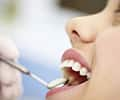What Are The Different Types of Teeth?
Adults have 32 permanent teeth, 16 in the upper jaw and 16 in the lower jaw. Each of your teeth has specific functions, including biting, tearing, and chewing food. There are four categories of teeth:
- Incisors: Are the eight front teeth, four upper and four lower. These teeth are for cutting food.
- Canines: Found on either side of the incisors, these slightly pointed teeth help you tear food when you bite.
- Premolars: Also referred to as bicuspids, these teeth have two pointed cusps for crushing food.
- Molars: These teeth have several cusps on the biting surface. The molars assist with grinding and breaking down of food.
What Are the Different Parts of a Tooth?
Now that you know the type of teeth that make up your smile let's find out about the parts of a tooth. Although the tooth is a small element of human anatomy, it consists of several parts - each with an important function. Here are the main components of a tooth.
- Crown: This is the top part of the tooth. The shape of the crown enables different functions. For example, the incisors are sharp and are for cutting into food, while the molars have a flat surface for grinding.
- Gumline: This is where the gum and tooth meet.
- Root: The root acts as an anchor that keeps your teeth in place. It is embedded in the jawbone and enables teeth to withstand the force of biting and chewing.
- Enamel: The enamel is the outer layer of the tooth. It is the hardest and most mineralized tissue in the body.
- Dentin: This is the layer underneath the tooth enamel surface. Dentin makes up the majority of a tooth's structure.
- Pulp: Is found in the center of the tooth; the pulp is a soft tissue that consists of nerve tissue and blood vessels.
Learning about the basics of tooth anatomy will help you understand how oral health conditions occur. There are four main types of teeth with different functions: biting, chewing, and grinding food. Each tooth has several distinct parts, with a unique role. Take care of this complex system to ensure that you have a healthy smile.
Oral Care Center articles are reviewed by an oral health medical professional. This information is for educational purposes only. This content is not intended to be a substitute for professional medical advice, diagnosis or treatment. Always seek the advice of your dentist, physician or other qualified healthcare provider.
ORAL HEALTH QUIZ
What's behind your smile?
Take our Oral Health assessment to get the most from your oral care routine
ORAL HEALTH QUIZ
What's behind your smile?
Take our Oral Health assessment to get the most from your oral care routine
Join Us
Get the best of your oral health routine and take it to the next level with expert advice, recommendations, products and solutions and special offers.
Join Us
Get the best of your oral health routine and take it to the next level with expert advice, recommendations, products and solutions and special offers.
















